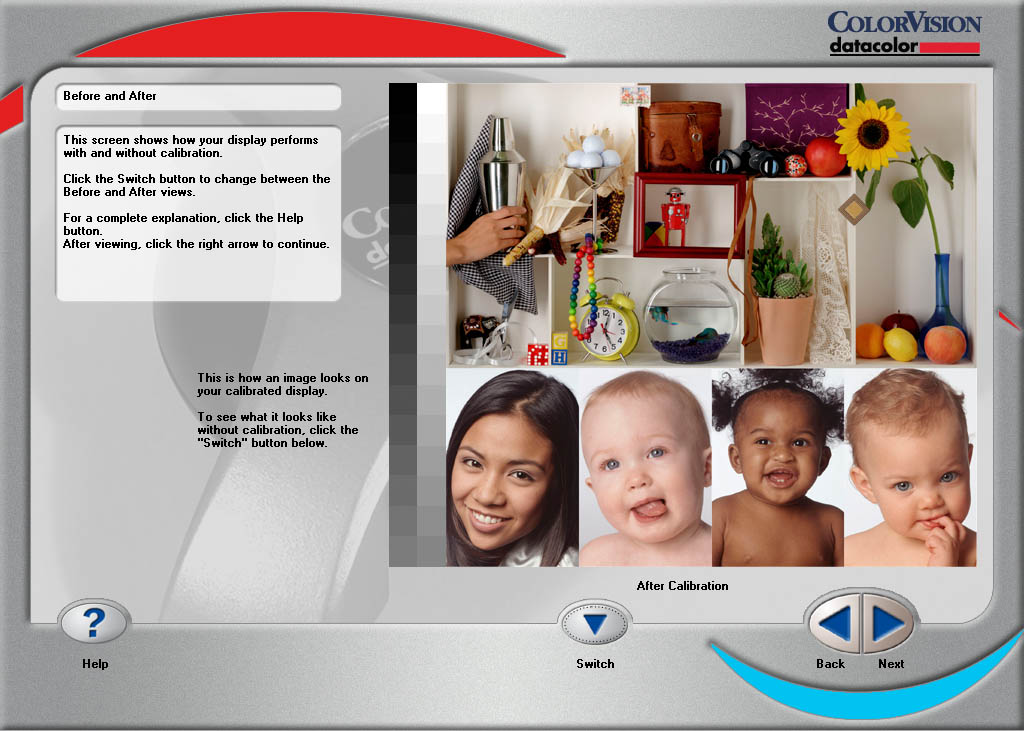Colorvision Spyder 2 Pro Driver Windows 7
Amazon.com ColorVision spyder2pro is a comprehensive system for professionally calibrating all types of monitors—including front projector displays—and for creating custom printer profiles for any PrintFIX Plus-supported printer. The Spyder2PRO system includes both the hardware and the software to make sure you. May 29, 2007. The Spyder2 Pro gives good results profiling CRT Monitors and LCDs. It does a good job with laptops as well, and with ColorVision's latest update to the software, it adds ambient light measurement, and can now run on Microsoft Vista as well.

Monitor calibration and gamma Making fine prints in your digital darkroom Monitor calibration and gamma by Norman Koren updated June 8, 2005 Search WWW Search www.normankoren.com Table of contents for the Making Fine Prints series for Image editing with Picture Window Pro In this page we discuss a critical step in setting up a digital darkroom: calibrating your monitor so it conforms to widely-accepted standards of image display. A properly calibrated monitor is essential for making prints that match the monitor image; it is an absolute necessity for success in the digital darkroom. Is now on a separate page. This page makes little mention of -- a set of tools and techniques that enable you to achieve optimum monitor/print matching and make prints with nonstandard inks and papers. You don't need it to get started.
It involves a learning curve, but it's simple to use once you've mastered it. Otherwide it's error-prone. I now use a fully color-managed workflow. Related pages: discusses how to get your prints to match your monitor image.
Covers some background areas related to gamma. We discuss (many old ones had an error), then we present two additional charts: one for, one for (R, G, B). We illustrate what luminance steps look like for different gamma settings, then discuss pages by, which contain some dubious advice about gamma.
This material on this page is for reference; it's not essential reading. Sooner or later you'll have to face it if you want to make the finest possible prints. Setting up your monitor • Your monitor should be operated in subdued light; strong direct light should not reach the screen. Dark areas of the screen should appear dark to the eye.
Kv 331 Keygen Mac. I work in a semi-darkened room with a lamp to the left of my screen (positoned so no direct light reaches the screen). Total darkness is unnecessary. CreativePro.com has nice articles about and.
• Set your monitor's color temperature (white point) to 6500K, D65, or sRGB, which is equivalent to 6500K. This is preferable to setting it on or software. Plane And Spherical Trigonometry By William Hart Pdf.
My monitor selections are 5000K (D50), 6500K (D65), and 9300K. Older monitors with no color temperature setting default to around 9000-9300K, which is far too blue to comfortably match prints viewed under incandescent light, which has color temperatures between 2600 and 4200K. The 5000K setting appears too dull and yellow on most CRT monitors.. Note the confusing terminology: Artists call higher color temperatures (bluer) 'cooler' and lower color temperatures (yellower) 'warmer.'
The huge variety of available hardware can make setting color temperature confusing. You may have the option of setting color temperature on the monitor (preferred) or with or software. Do not set it in both; this may result in an overcorrection-- your monitor will appear dim and yellow. Software settings work correctly if the monitor is uncorrected, i.e., about 9000-9300K. Unless you have a you'll have to trust your eyes: White and gray images (where R = G = B) should appear tonally neutral, i.e., they should have no visible tint. The and test patterns are excellent for this purpose.